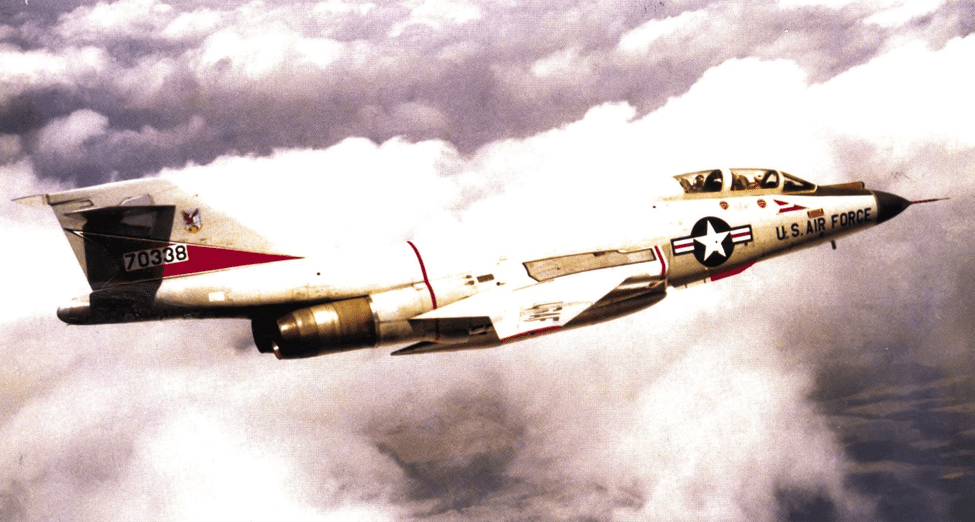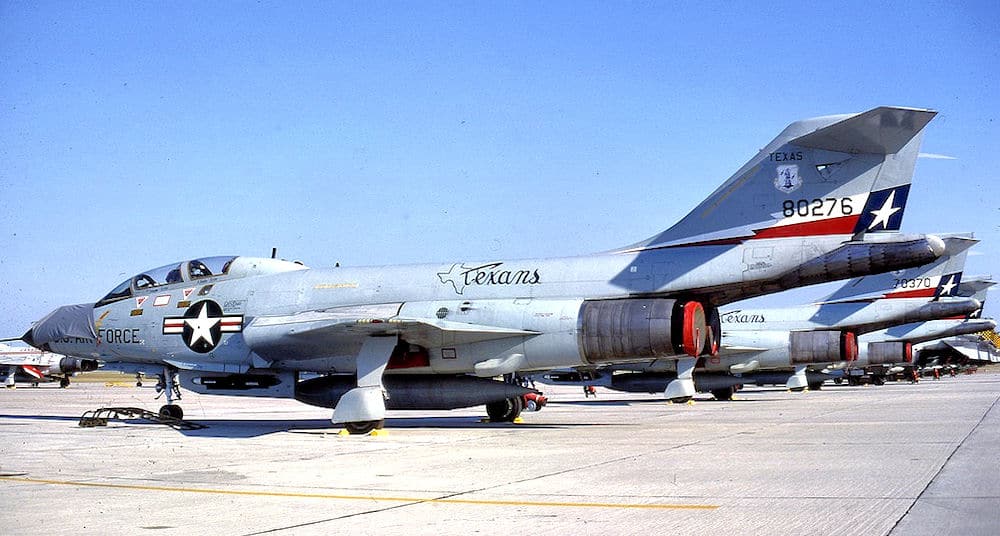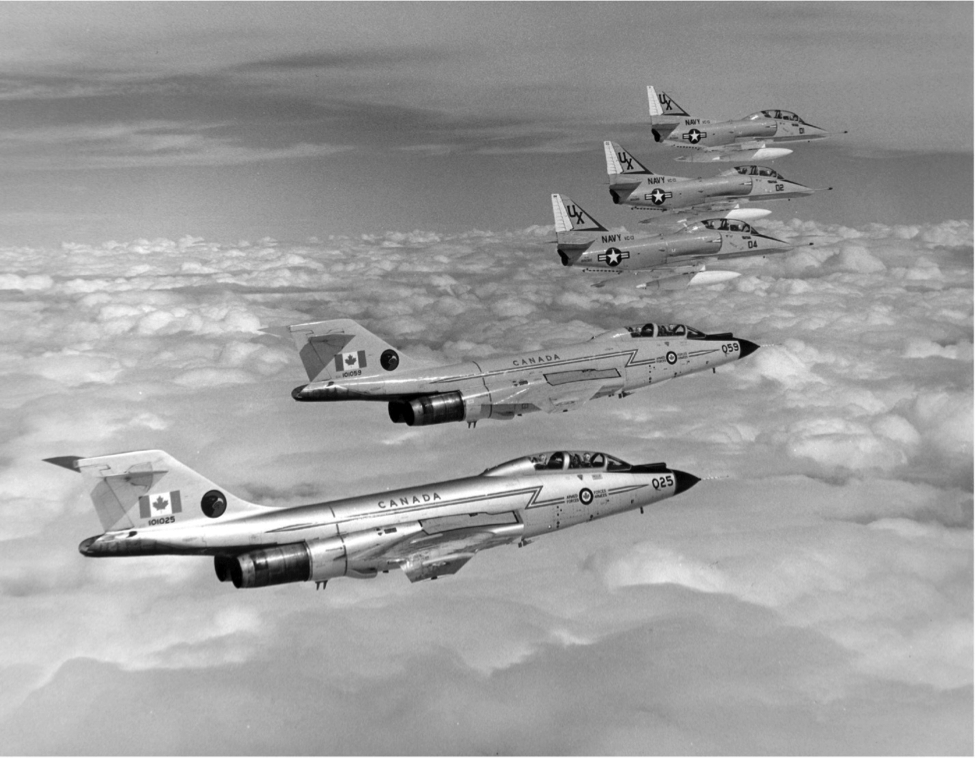Two Seater for ADC
The two-seat F-101B was essentially an interim design intended to fill a gap in the ADC interceptor ranks until newer designs would be ready. F-101Bs first became operational with the 60th Fighter-Interceptor Squadron on 5 January 1959.

That Sleek Interceptor
The F-101B had a lengthened fuselage required to accommodate a tandem two-seat cockpit and the Hughes MG-13 fire control radar. Also equipped with more powerful engines and the distinctive external afterburners mounted out behind the airplane, the F-101B Voodoo was capable of flying at Mach 1.85.

From B to F and Soldiering On
The F-101B was updated over time to internally carry differing loadouts of conventional and nuclear air-to-air missiles, and later to employ heat-seeking missiles with the nose-mounted infrared sighting and tracking (IRST) system. Many of the operational F-101Bs eventually received upgrades and modifications to the F-101F standards during the late 1970s.

Defending the Air
McDonnell produced a total of 807 F-101s (all variants). A total of 479 F-101Bs had been produced when production of the Voodoo came to a close in March of 1961. The majority of them were delivered directly to ADC beginning in January of 1959. Voodoos served with ADC through 1972.

Replacing The Deuce
The ANG then used the F-101B to replace its F-102 Delta Daggers and flew them until 1982. The last ANG F-101B “One-oh-Wonder” was retired on 21 September 1982 at Tyndall AFB in Florida. The Air Force replaced most of them with the F-4 Phantom II.

Setting the Stage for a Legend
Although pitch control, inertial roll coupling, and missile issues inherent in the design of the Voodoo made it tricky to fly it still served a remarkably long career of 25 years. The Voodoo’s most important contribution to aviation may be that it was McDonnell Douglas’s stepping stone to the F-4 Phantom II, which incorporated the placement of the horizontal control surfaces above and behind the engine exhausts, the twin afterburning engines, and crew of two for interception missions.

Great White North Magic
The only foreign operator of the Voodoo was Canada. Between 1961 and 1987 the Royal Canadian Air Force (RCAF) operated CF-101B Voodoos primarily as interceptors. An interesting fact about the Canadian Voodoos is that between 1970 and 1972, Canada actually swapped 56 of their original CF-101B Voodoos back to the United States Air Force for 66 replacements.

When Older is Newer
Operation Peace Wings saw airframes that had actually been manufactured before the initial batch of CF-101Bs replace the newer Canadian Voodoos. This was acceptable because though chronologically older, the replacement airframes had fewer flight hours on them. They had also received upgrades and modifications that the original CF-101Bs had not.

Going Out on a Roll
22 of the returned CF-101Bs were then converted to RF-101B photo-reconnaissance variants. These recon birds served with the High Rollers of the Nevada Air National Guard until 1975.


Stationed at Sawyer AFB 67-68. Had a det of 101’s. Go a ride, remember it so well.
Wished you had mentioned the KYANG flew Voodoos into the middle 70’s. We were a crack outfit. Deployed to Japan during the Puebleo crisis. We carried a PUC, and were C1 combat rated